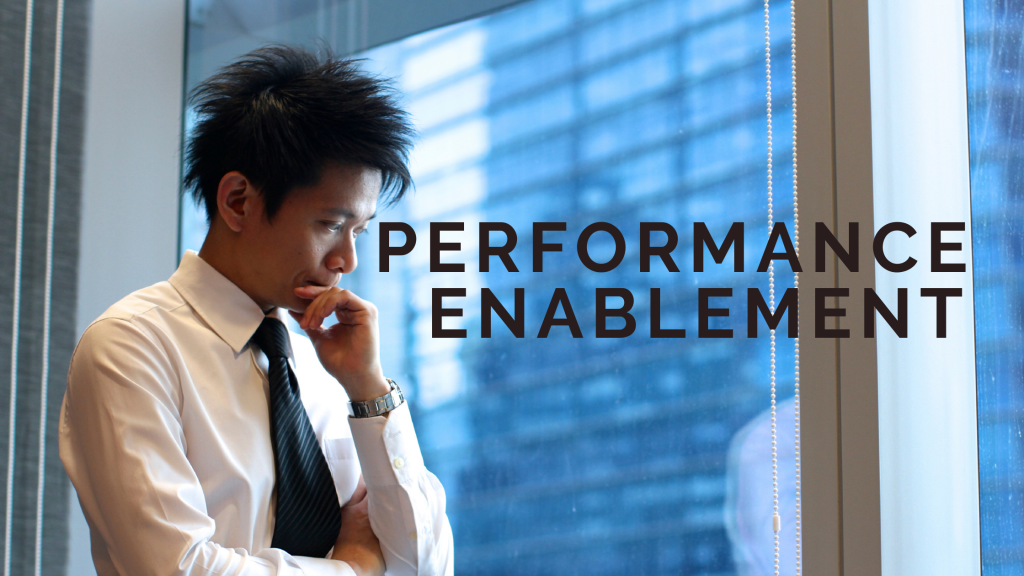In the face of the “Big Switch”, which management practice retains talented Millennial and Gen Z employees the best: Performance management or performance enablement? Is this just the new buzz or something to pay attention to?
Those of are a certain age will wax nostalgic about the days when they had to “pay their dues” – when the road to success was clocking in 9-to-5 and enhancing skills via unceasing training, certification, and hitting those numbers set before them.
Whether this was for school, a sports team or an organization, the traditional performance management process was a top-down approach. It was linear, static, and very straightforward. It simply involved establishing objectives when the fiscal or calendar year began and presenting them to the team member who needed to smash those goals. Management then monitors everyone’s performance against the set objectives throughout the year and then shares their evaluations come the annual performance appraisals.
The result could be a number or a non-quantitative one (below expectations, meets expectations, or exceeds expectations). The manager then shares his or her conclusions on the quality of the employee’s performance against the benchmark. If it falls below expectations, the manager collaborates with the employee on a performance development plan. Then the manager gets to dictate the employee’s compensation for the following year.
How effective is performance management?
This isn’t such a bad approach but the methodology proved defective in many ways:
- Ratings were inconsistent;
- Feedback was insufficient;
- Feedback was not regular;
- There was a lack of transparency;
- Coaching did not focus on career development (even if it promised to do just that);
- Lack of transparency (since the employee’s primary role was to get on the boss’ good side).
On the flip side:
- Since managers knew that their ratings influence the employee’s pay, they are less likely to give low ratings;
- Discussions between the manager-evaluator and employee can be awkward since they both know that the conversation ultimately leads to rating scales; and
- Annual appraisals are often rushed and are thus, inaccurate because the bigger goal for the evaluator is to complete the task;
Luckily, performance management has evolved and continues to evolve to accommodate collaborative dialogue. The efforts are measurable and visible in the financial bottom line and often appear as cost savings and productivity improvements.
As a result, organizations who want to move forward adapt what we now know as PERFORMANCE ENABLEMENT – a system of measuring performance that goes beyond objective metrics.
Performance enablement shifts the focus from “How can we push this employee to produce more in less time?” to “How can we empower our employees to deliver their very best?”
How is PERFORMANCE ENABLEMENT different from PERFORMANCE MANAGEMENT?
Performance Management zeroes in on managers’ setting objectives. It focuses on an employee appraisal schedule run by HR. It involves monitoring, maintaining, and improving employee performance to meet business objectives.
Performance Enablement, on the other hand, fixes the spotlight on the business goal BUT the manager takes a more active role in understanding the individual employee. The responsibility for everyone’s productivity no longer rests with HR but with the business as a whole.
It sounds romantically unrealistic at first glance. But the philosophy is simply empowering the employee to take more ownership of the role they play. It’s leading them to recognize their role in growing the business and in working towards a shared business objective.
A combination of the two (performance management and performance enablement) has proven to be a potent productivity potion for many organizations. Management no longer focuses on tracking results alone. With the combined methodology, attention is shifted to how results are achieved.
This isn’t an easy task. Crucial here is the need for businesses to support their managers by giving them the tools and the necessary coaching support they need to enable their own teams. In effect, the manager wears the coach hat, more often than the boss hat.
How is this done?
- Regular, continuous feedback and coaching all throughout the year. The objective is to enhance the employee’s learning, performance and advancement;
- Zeroing in on the unique motivations of an employee, the employee’s learning style, and supporting the employee’s ability to motivate themselves;
- Using a more collaborative approach between manager and employee during goal-setting;
- Using a more flexible style of leadership or adapting a leadership style appropriate to the organization’s dynamics and workplace.
In brief, the Performance Enablement is people-centric. It ensures that managers can both manage AND enable their team members to consistently give peak performance. Further, this method ensures fewer incidences of power imbalances between managers and subordinates. The focus has shifted from “trying to live up to management standards (and moods)” to “aligning employee performance with company strategy and goals.”

